Kaya Fellcheck
A Brief History of Teddy’s Bear
and an illustrated checklist
of Tuck’s Little Bears
The history of the fluffy, huggable, Teddy Bear is well documented and equally well presented in toy-history books, magazine articles, and at several sites on the Internet.
The world knows that the stuff toy “Teddy Bear” seems to have enjoyed simultaneous development in both Europe and America. In Europe by Richard Steiff for his aunt’s Margarete Steiff Company in Germany and in the U.S.A. by a New York candy store owner whose wife hand-made stuffed animals to sell from the family’s storefront window.
The first American Teddy bear was sold in Brooklyn by Morris Michtom on February 15, 1903.
Michtom wanted to call the toys “Teddy’s Bear,” his reasoning being that just a few months before, he read a cartoon by Clifford Berryman and the story behind it, that ridiculed an incident that involved Roosevelt on a Mississippi hunting trip. The trip sponsors had captured a large black bear and had tied one of its rear paws to a tree stump, thinking they were making it easy for the President to make a “trophy kill.” Roosevelt refused, claiming it to be unsportsmanlike and the bear was released.
Word of the event spread across the country like wildfire through newspaper accounts and magazine articles. It just as quickly got to Europe where the cartoon was equally popular and published on the continent in at least a dozen languages.
The toy bears were an instant success and within two years the Michtoms founded the Ideal Toy Company which initially focused on Teddy bears, but also in later years produced several series of collectible dolls.
One of the most endearing tales in the “Teddy’s Bear” legend is personified by the President’s daughter, Alice Roosevelt Longworth. Alice was the darling of the White House during her father’s presidency (some called her the White House wild child), she was beautiful, fun to be around, and as sharp witted as any woman of that era who was part of Washington’s social circles. It happened in 1963, for the Teddy Bear’s 60th birthday, Benjamin Michtom, the son of Morris and Rose Michtom, tried to unite one of the original bears with a descendant of its namesake. In what was an expected and typical reply, Alice Longworth declined the offer to pose with the toy by asking, “What does a 79-year-old doll want with a 60-year-old bear?”
***
After the Berryman cartoon made its way to the last rung on the popularity ladder, the postcard publishers found a new favorite topic. American artists joined others from England, France, Belgium, and Germany to create sets of cards featuring bears in anthropomorphic poses doing everything from washing dishes to reciting the alphabet.
Tuck was an early entrée into the whole world bear craze when they published their Little Bear series number 118. It is a twelve-card set, the artist is unknown, but each card is lightly embossed and presents well in bright red, pink, green, mustard, and blue.
The checklist below is presented for the convenience of our readers who care to collect the set.
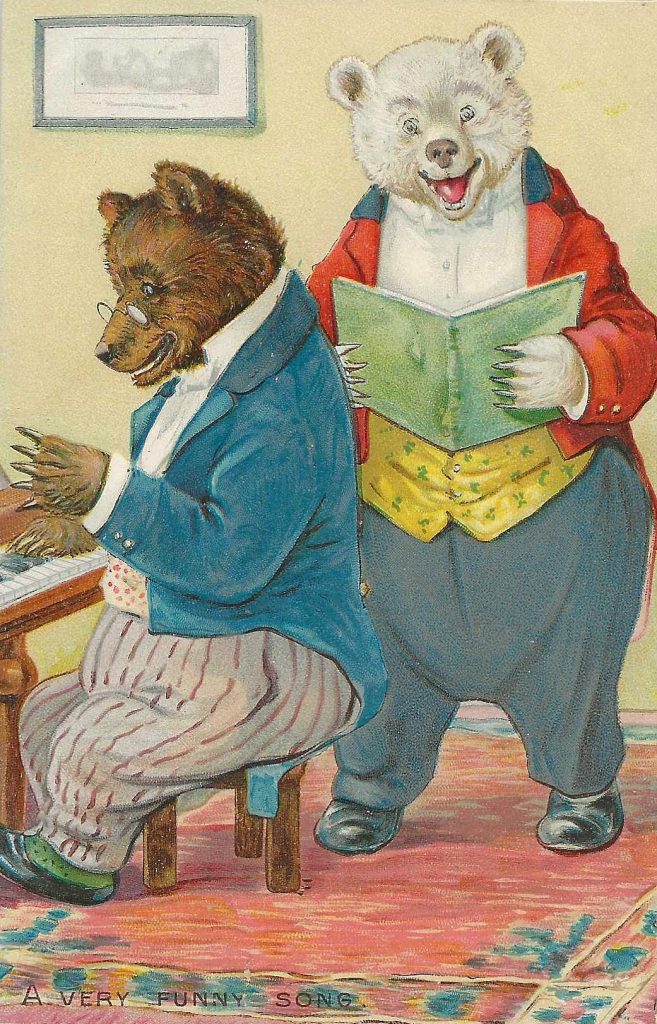
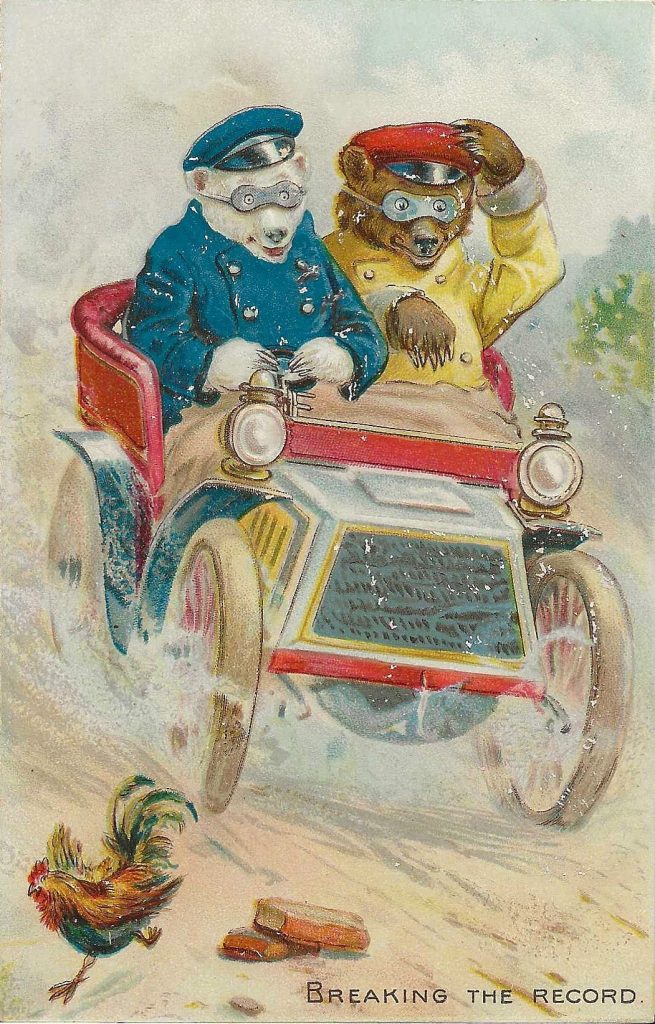
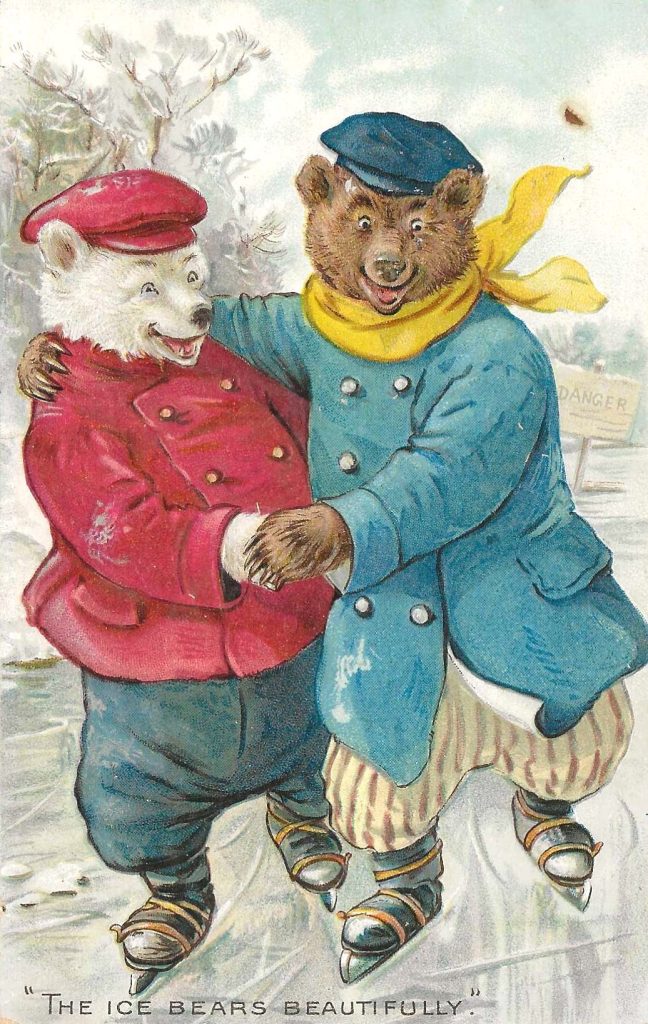
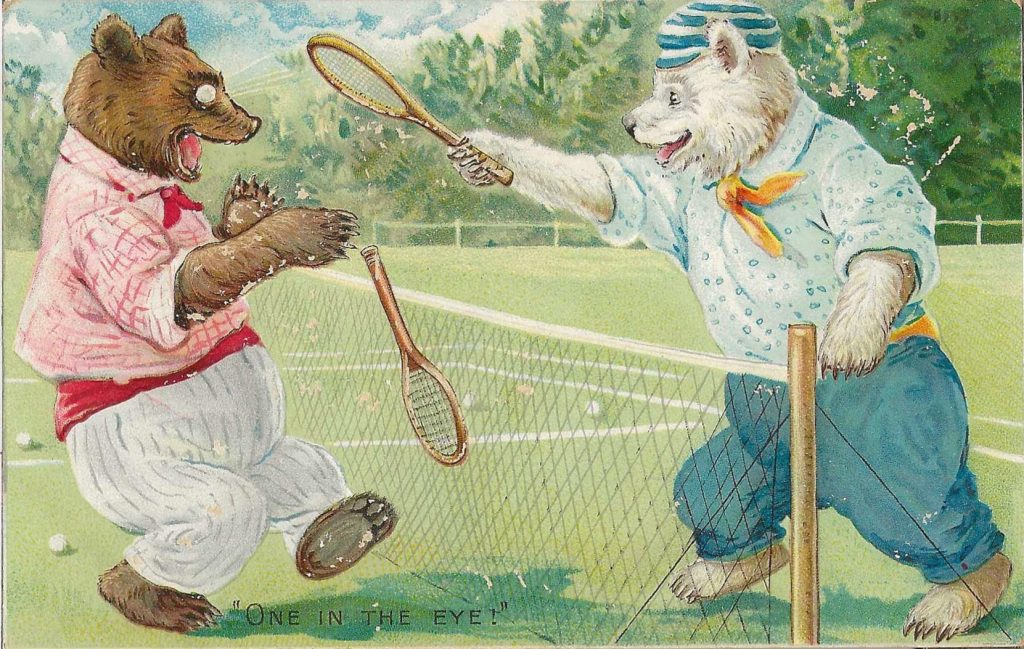
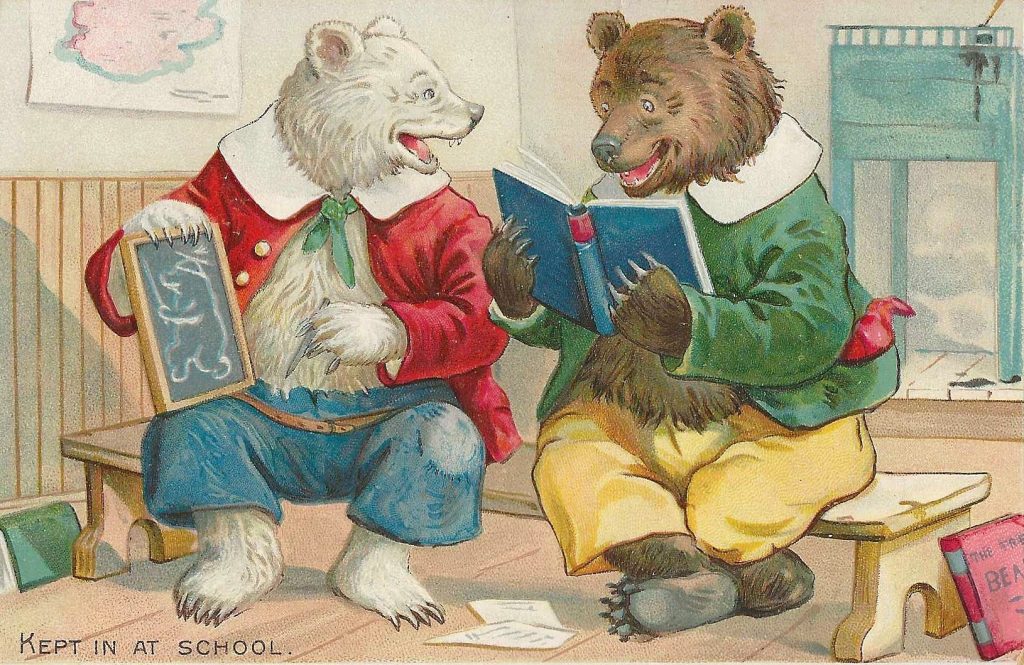
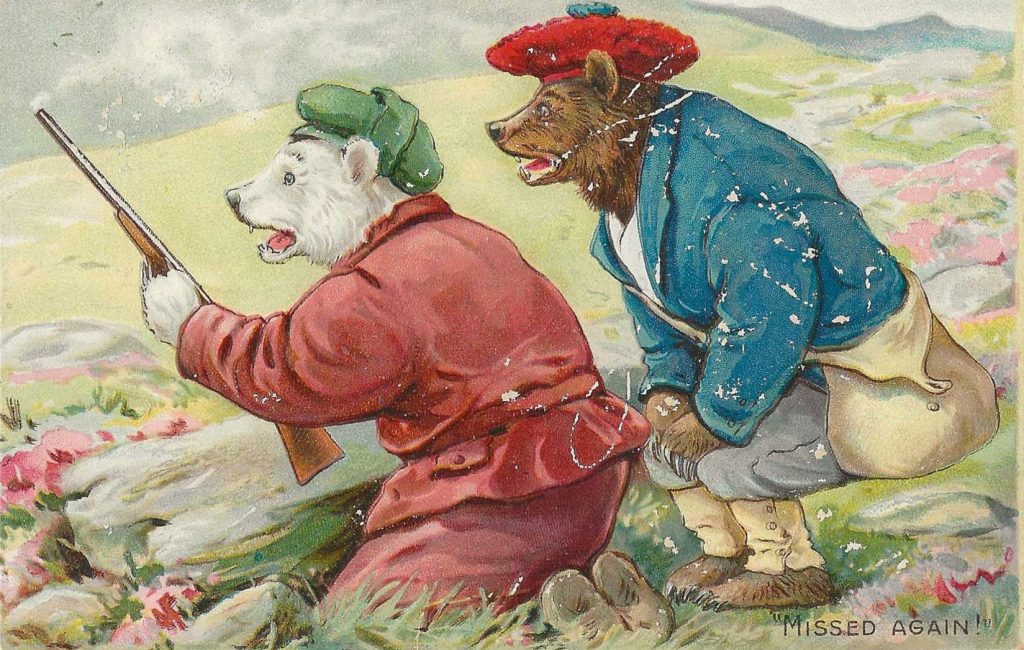
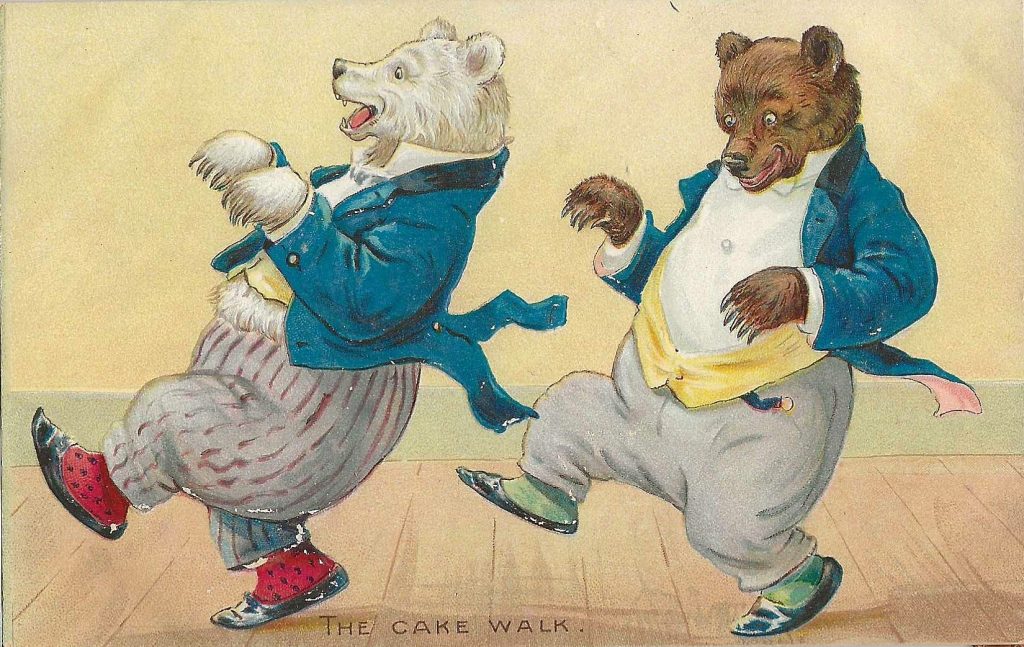
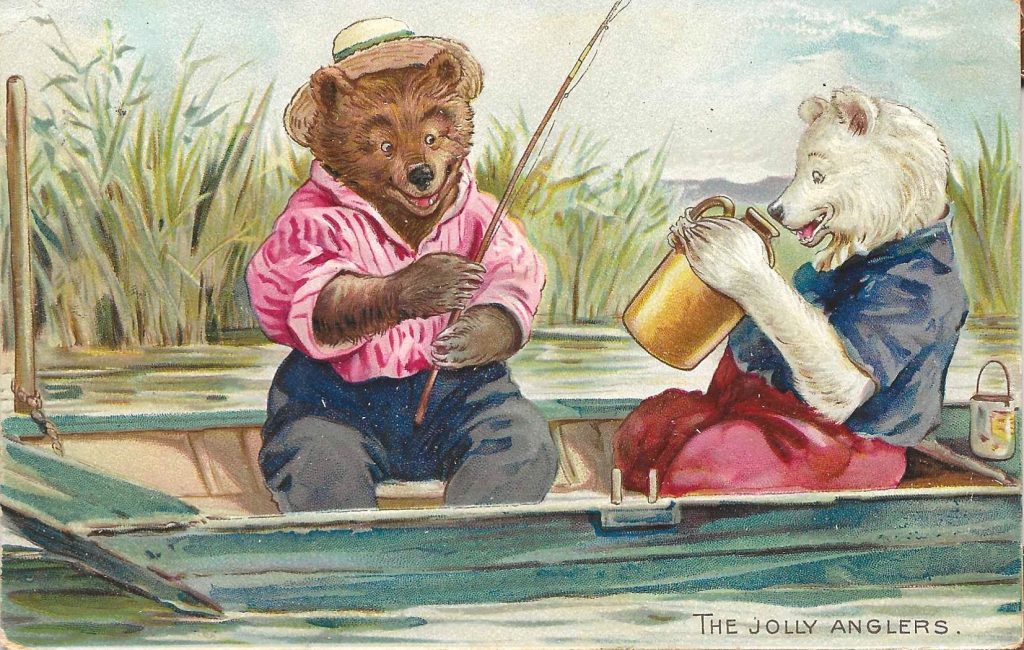
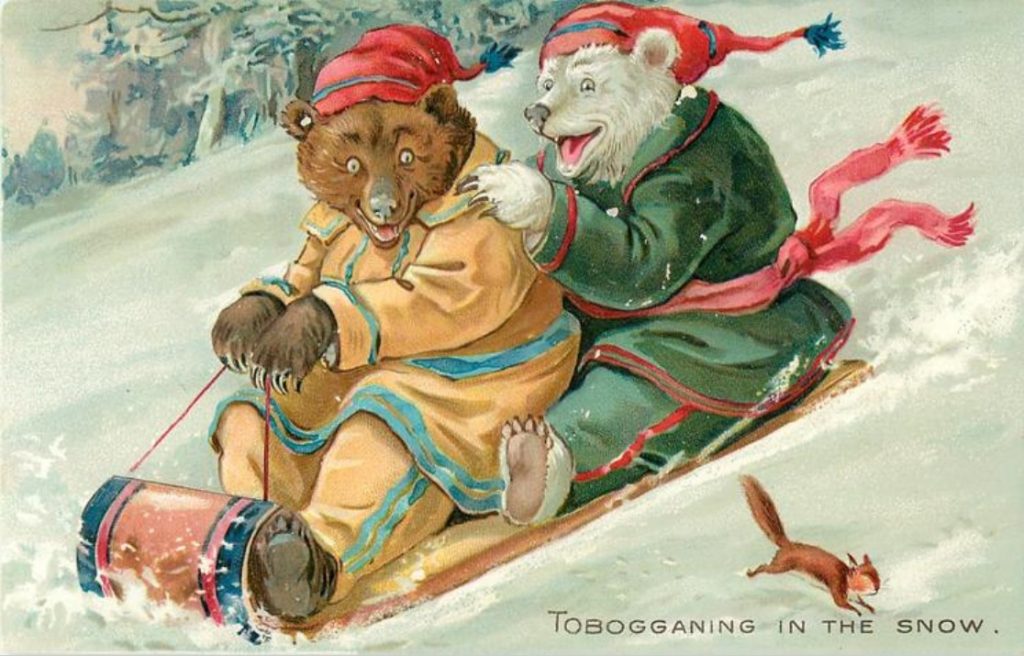
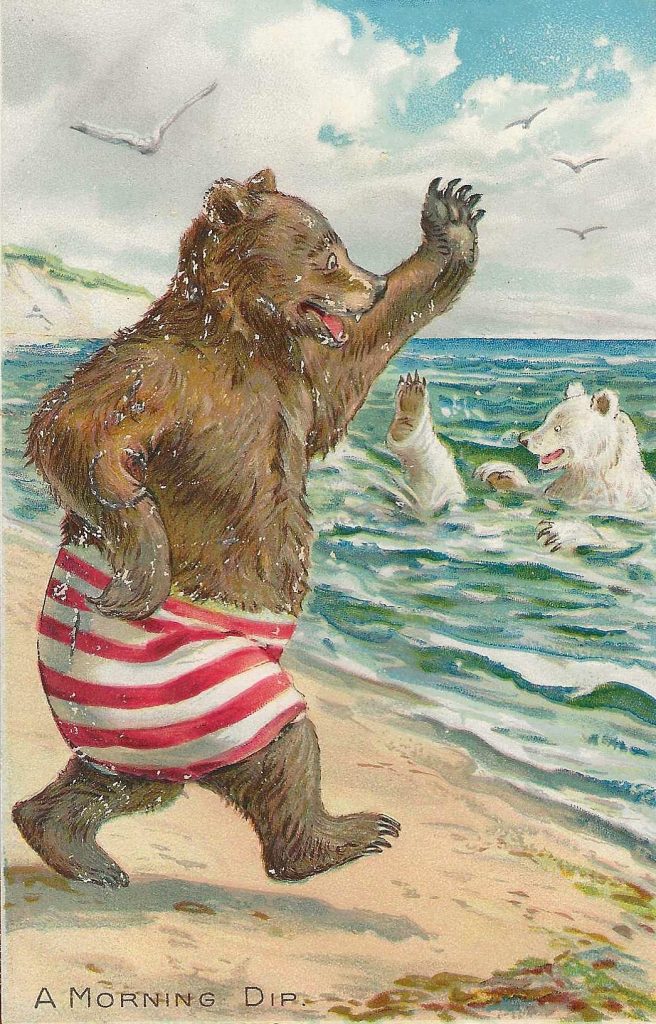
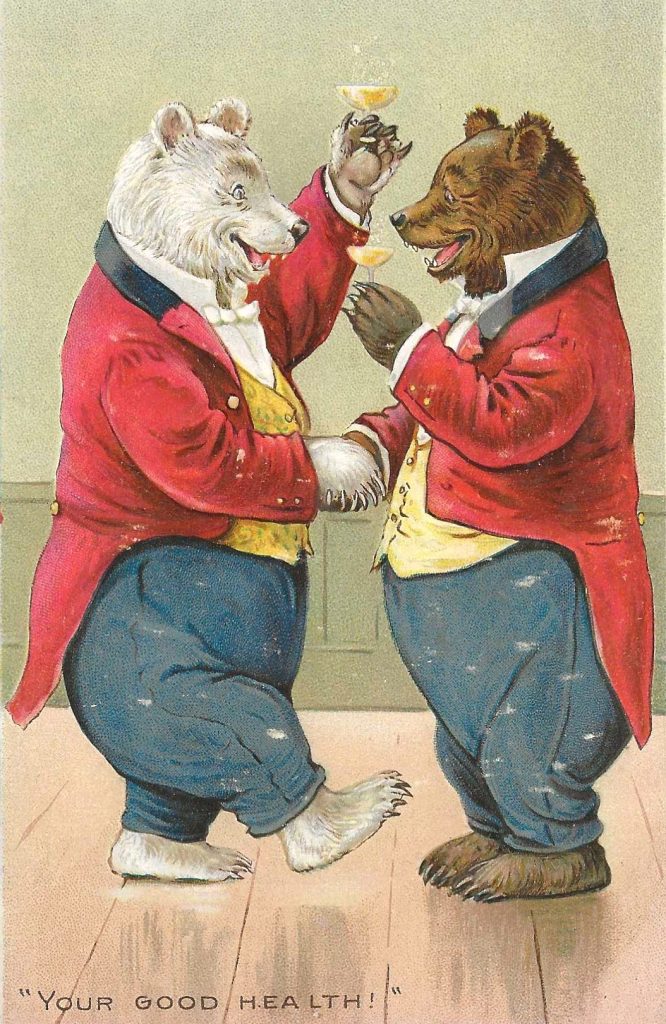
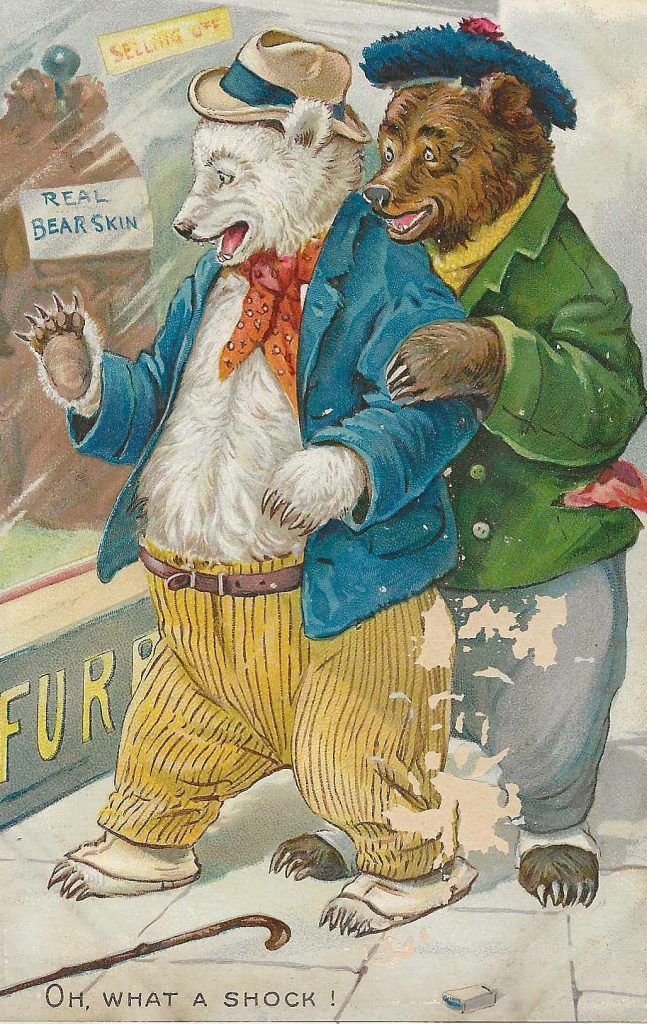
Great story! Thanks. There are 11 cards of this series currently on sale at AHA (attic heritage auctions) on Hippostcard.com as well as some Roosevelt Bears. I think practically every child in the 20th century grew up with a favorite teddy– I remember mine.
I have a postcard sent to Cliff Berryman’s son Jack. Unfortunately, it was sent by his aunt not his father, so there are no sketches of bears on it!
If anyone is interested in reading more about the Teddy Bear’s history -see my blog on his rivalry with Billy Possum at https://artist-signedpostcards.com/2023/04/05/billy-possums-postcards/
I’ve often wondered whether we’d have any name other than “stuffed bears” for those toys had the Teddy Roosevelt incident not happened.